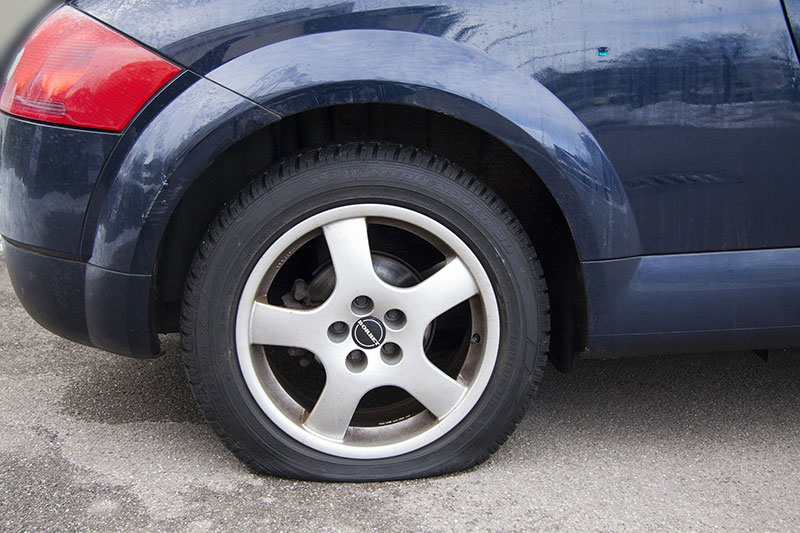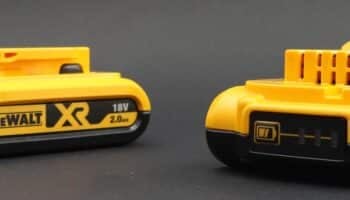Picture this.
You’re at the side of a deserted highway, and you need to change a tire. Of course, you don’t have a torque wrench in your trunk. So how to get lug nuts just as tight without one?
Okay, that might sound like the intro to a low-budget scary movie, but it could very well be a real scenario.
I don’t know anyone who carries a torque wrench around in the trunk, but I do know several who carry tire irons. In fact, that might be because once upon a time, when car manufacturers provided full-size spares, they often included a tire iron.
In the article below, I’ll walk you through many ways in which you can change a tire without a torque wrench. Hopefully, by the end of it, you’ll be an expert in alternative tools.
Keep reading to remove that tire!
Tightening a Log Nut Without a Torque Wrench
There are a couple of tools you can use to get lug nuts just as tight as a torque wrench. With a crossbar tire iron, choose the right size socket and tighten it by hand if you have the arm strength. If not, you need to stand on the right side of the tire iron to turn and tighten the lug nut clockwise.
I should note that your tire iron doesn’t need to be a crossbar—4-way—type. The single-socket type will work for this method as well. As long as the socket fits the lug nuts.

If you don’t have a crossbar tire iron with your teeny tiny spare tire, I suggest you keep one in your trunk or get roadside assistance.
An annual roadside assistance membership might cost the same as a torque wrench, and while you’ll pay for the torque wrench once you’ll be charged for the membership annually.
Let’s break the process down, step by step.

Double-Check for a Jack
Before I show you the actual process for doing this, I should mention that none of the steps below will work unless you have a jack.
When your car is not lifted partially off the ground, thousands of pounds are resting on the 4 wheels, so taking one or more out without placing a jack to hold the weight can be very dangerous.
Log Nuts vs Lug Bolts
A lot of people don’t seem to know this, but not all wheels are built equally. Some have log nuts, which are commonly used on wheel hubs where the hub contains the lug. These are common on chrome wheels or anywhere the head of the bolt will show.
Log bolts, on the other hand, are more commonly used in wheel models with hubcaps. These are an ideal combination, as the bolts thread into the holes of the wheel, making enough space for the caps to fit perfectly.
Changing a Tire with a Crossbar Tire Iron
Now that you double-checked for a jack, let’s assume the nuts on the wheel are screwed on very tight.
Step 1. Removing lug nuts.
- Choose the right socket size and fit it over the lug nut.
- Jack up the car just enough that it’ll hold the car once the wheel is removed, but not so much that it’s lifted off the ground. You need friction between the wheel and the ground to make the removal easier.
- Take the tire iron in both hands and turn it counterclockwise. If you don’t have enough strength in your arms to loosen the lug nuts, stand on the left side of the tire iron and use your body weight. Be careful here. You don’t want to fall!
- If you are a lightweight—literally—you may need to provide a bit more force, so lightly bounce your weight on the bar.
- Remove the lug nuts.
Step 2. Replacing a tire.
- Put your spare tire on the car.
- With your fingers, tighten the lug nuts as tightly as you can in a crosswise motion. Start with the log nut in the upper left corner, then tighten the one in the lower right corner, and so on. Like you’re drawing an “X”.
- Lower the car back to the ground.
- Again using the tire iron, tighten each nut in order. Use both hands and only tighten each a little at a time. Don’t tighten one as much as you can and move to the next.
Use some common sense in step 4. If you can bench press your body weight, tightening in the manner outlined above is likely sufficient. If you can’t crack the seal on a mason jar, you need to use your body weight.
If you’re in the second category, step back on the bar, but this time on the right side, so you’re tightening the nuts clockwise. Repeat this step until the nut feels tight.
This will get you on your way until you install a new tire properly.
Changing a Tire with an Extendable Breaker Bar
I mentioned above that there are a few tools you can use to tighten lug nuts if you don’t have a torque wrench.
One is the tire iron mentioned above, and the other is an extendable breaker bar. Breaker bars are capable of producing enough torque to deal with even the most stubborn lug nuts.
A breaker bar is a long steel bar with a head that has a socket drive attached to it. The head typically rotates up to about 240 degrees, which means you can get the bar in the best possible position to create enough leverage to deal with a tight lug nut.
If you have a breaker bar that extends to 18 inches (ca. 46 cm) in the trunk, you have everything you need to change a tire.
Alternatively, you can also use a 24″ 40 schedule PVC pipe instead of the breaker bar if you so prefer. And if you’d rather have both for the ultimate mechanical advantage over stubborn bolts, more power to you.
Step 1. Removing the tire.
- Jack up the car.
- Extend the bar to the limit possible without it hitting the ground. This provides greater force and torque
- Fit the socket over the lug nuts and remove them.
Step 2. Replacing a tire.
1. Contract the breaker bar back to its shortest length.
2. Tighten the lug nuts as hard as you can.
The advantage of shortening the bar is that it will prevent you from overtightening the nuts since you now have less force and torque.
Do You Really Need A Torque Wrench?
The short answer is no, they’re not absolutely necessary.
The longer answer is that if you can, you should have one. This is why I recommended above that if you change a tire without one, it will get you on your way again, but it’s still a good idea to have the nuts checked and properly retightened.
Here’s the thing. Modern cars are very precise in their manufacturing. If you’re still sporting a 1980 Ford Pinto, you go right ahead and tighten your wheels without a torque wrench.
But if you’re driving a later model car, every little thing is computerized and precisely calibrated.
Here’s what Car and Driver say can happen if a torque wrench isn’t used. Note I said can, not will.
- Overtightened lug nuts can cause your rotors to warp
- They can strip threads
- Wheel studs could snap off
- If you don’t tighten them enough, they can fall off … which means your wheel could fall off too.
Check your owner’s manual. Chances are it will give you the exact torque specification for your vehicle.
Conclusion
So you’ve learned how to get your lug nuts off without a torque wrench and how to get them tight again. And that it’s still a good idea to get a pro or someone with a torque wrench to look at them later.
Can you over-tighten your lug nuts by hand? Sure you can. If it’s not just your car that’s jacked up. If you have the necessary muscle, you could tighten the nuts more than the specifications call for.
The opposite is true as well. If you can’t open a jar lid by yourself, it probably goes without saying you’ll never get the lug nuts tight enough to keep your wheel on.
And if you have a lug nut that’s tight and difficult to remove, adding your body weight to a tire iron or using the natural torque that you’ll find with an extendable breaker bar will do the job for you.
I hope that answered all your questions! Why not check out the related articles below? On the site, you’ll find all sorts of solutions for common appliance issues, such as a dishwasher that keeps restarting.
Have a great day!
— Craig.







